Dimmers play a vital role in creating the perfect luminous atmosphere. Not all dimmers are tuned to the same voltage, and understanding this is the key to orchestrating an ideal lighting performance.
- Dimmers have evolved from basic rheostats to sophisticated devices that regulate the voltage to the lamp by shutting the circuit every time the AC sine wave reverses direction.
- Different dimmers operate within specific voltage ranges to cater to diverse lighting needs.
- Understanding voltage is crucial for selecting the right dimmer, ensuring both efficiency and safety.
- Modern dimmers include low-voltage (12V), standard line voltage (120V), ELV (Electronic Low Voltage), PWM (Pulse Width Modulation), and 0-10V options.
Dimmer switches, born out of the need to control theater lighting, have undergone a transformative journey. From rudimentary rheostats dimming incandescent bulbs, to today’s complex devices catering to varied lighting technologies, the evolution of dimmers has been driven by the quest for efficiency and safety. The crux lies in understanding the historical limitations of dimmers and how modern innovations have overcome them.
Mismatches between a dimmer and a bulb can lead to performance issues such as flickering, limited dimming range, and non-functioning lights.
Low-Voltage Dimmers (12V)
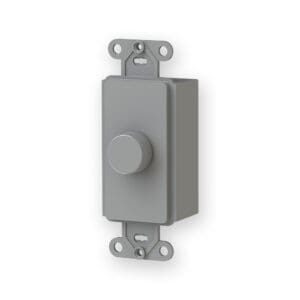
Low-voltage dimmers, such as the Letzgo Low Voltage Digital Dimmer are favored in specialty applications such as track lighting, under-cabinet lighting, and landscape lighting. These environments benefit from the precision and reduced energy consumption provided by low-voltage lighting. These systems require a transformer to step down the voltage from the standard line voltage, making the dimmer’s task more intricate yet capable of delivering a controlled and delicate lighting atmosphere.
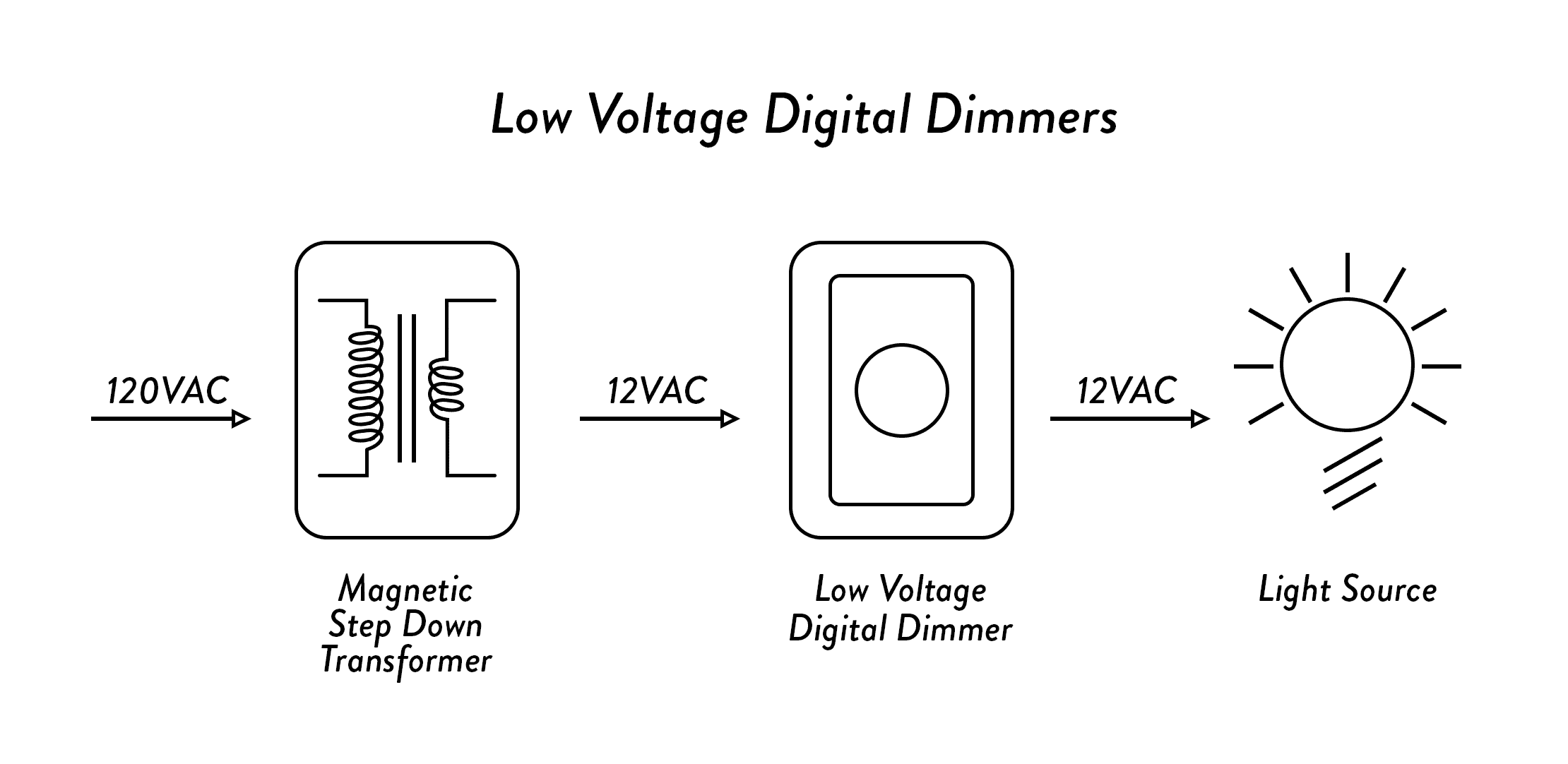
Standard Line Voltage Dimmers
Compatible with a wide range of common lighting fixtures, standard line voltage dimmers, usually rated at 120V in the U.S., are used with a variety of bulbs, including LEDs. While these light dimmers are versatile, understanding the specific needs of your line voltage lighting, such as the type and total wattage, is crucial in selecting the right one. These dimmers typically handle higher loads and are the standard choice for general lighting needs.
In the early days, dimmers were constrained by simple voltage reduction methods, limiting their applications. Today’s dimmers, however, offer a spectrum of solutions. Low-voltage dimmers (12V) excel in specialty applications like the aforementioned track and under-cabinet lighting, by providing precision and reduced energy consumption. Standard line voltage dimmers (120V) are versatile and cater to common lighting fixtures, including LEDs. For LED bulbs, specific dimming methods like ELV dimmers, PWM dimmers, and 0-10V dimmers have emerged to ensure optimal performance and longevity.
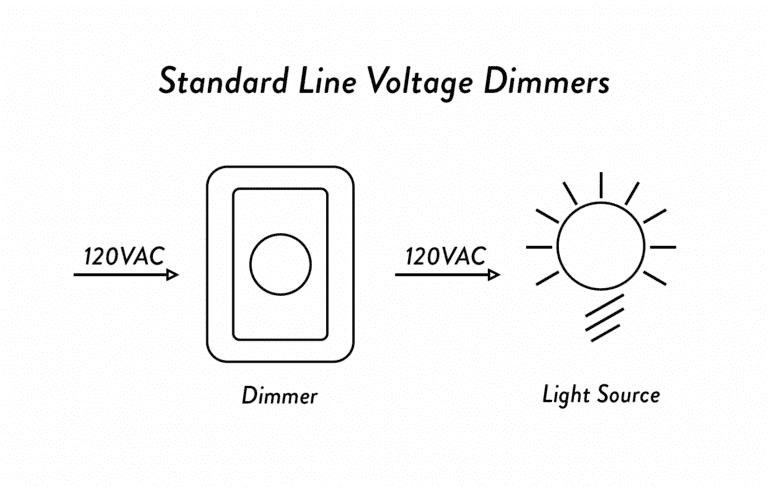
ELV Dimmers (Trailing Edge)
Electronic Low Voltage (ELV) dimmers, also known as trailing edge dimmers, are specifically designed for use with LED light bulbs. Unlike earlier dimmer designs, ELV dimmers cut off the electricity supply at the end of each cycle (the “trailing edge” of the AC waveform). This precise cut reduces flickering and noise in low-voltage LED lighting. ELV dimmers need to be compatible with the voltage of your lights’ transformer, typically 12V or 24V, for smooth dimming and circuitry protection.

MLV Dimmers (Leading Edge)
Magnetic Low Voltage (MLV) dimmers, also known as leading edge dimmers, were initially designed to be used with halogen bulbs and magnetic transformers. The magnetic dimmer was used to control the heavy magnetic transformer that was used for the lighting application. These MLV dimmers need to be compatible with the voltage of your lights’ transformer, typically 12V or 24V, for smooth dimming control.
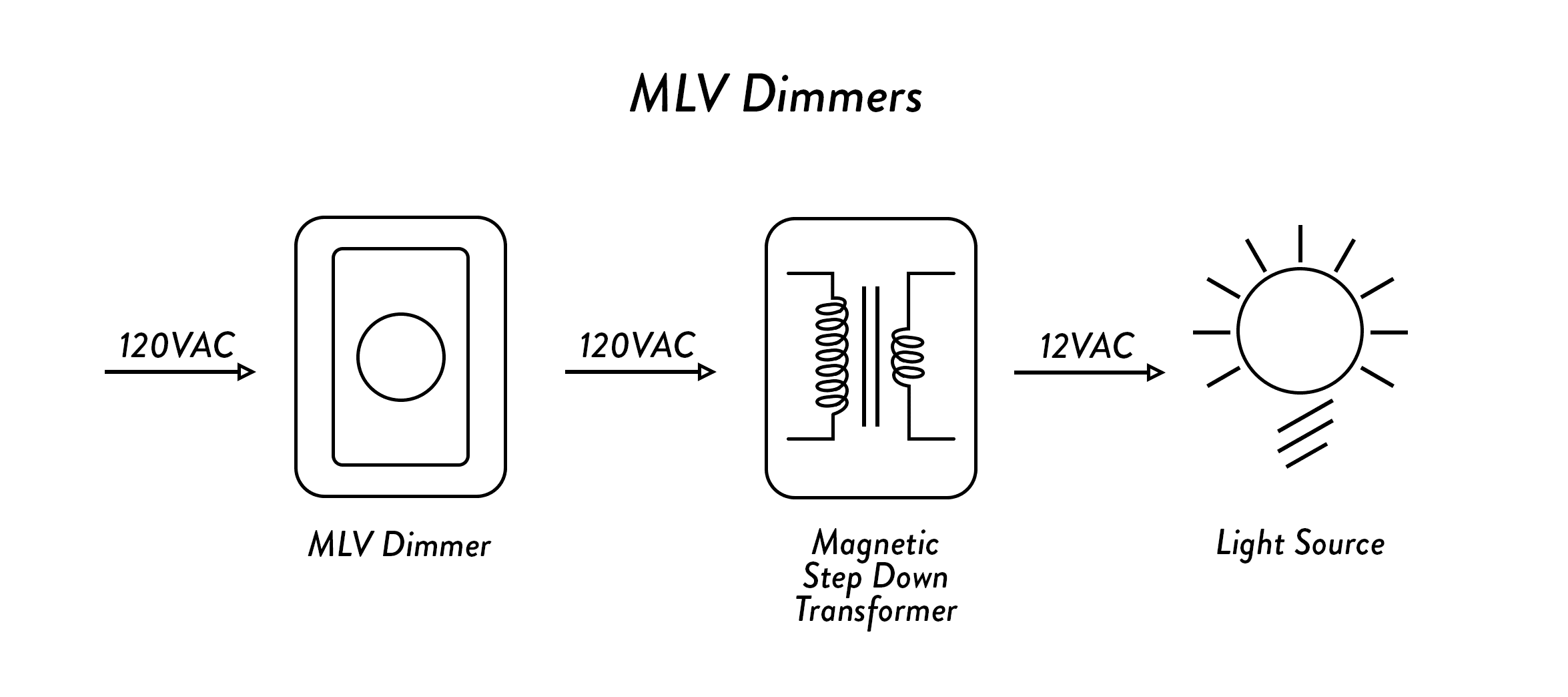
PWM (Pulse Width Modulation) Dimmers
Imagine a strobe light flashing rapidly — so fast that you perceive it as continuous light. That’s the principle behind PWM dimmers. They turn the LED on and off at a frequency too quick for the eye to notice, controlling the brightness by varying the “on” time. In the case of LEDs, the longer the “on” time, the brighter the light. This method is particularly effective in applications where maintaining the light’s color temperature is critical, such as in artwork illumination or display settings. This type of dimmer switch for LED lights is less about voltage reduction and more about frequency control, but the voltage supplied must align with the LED’s requirements to ensure no overdriving or underdriving occurs.

0-10V Dimmers
0-10V is a low-voltage dimming method commonly used in commercial and architectural lighting. It works by sending a DC voltage signal between 0 and 10 volts to the LED driver to adjust the brightness level. This type of LED dimmer provides smooth, stable, and flicker-free dimming from 100% down to typically 1% light output and is often used for large-scale lighting projects. One of its key advantages is the ability to integrate with building management systems for advanced lighting control.
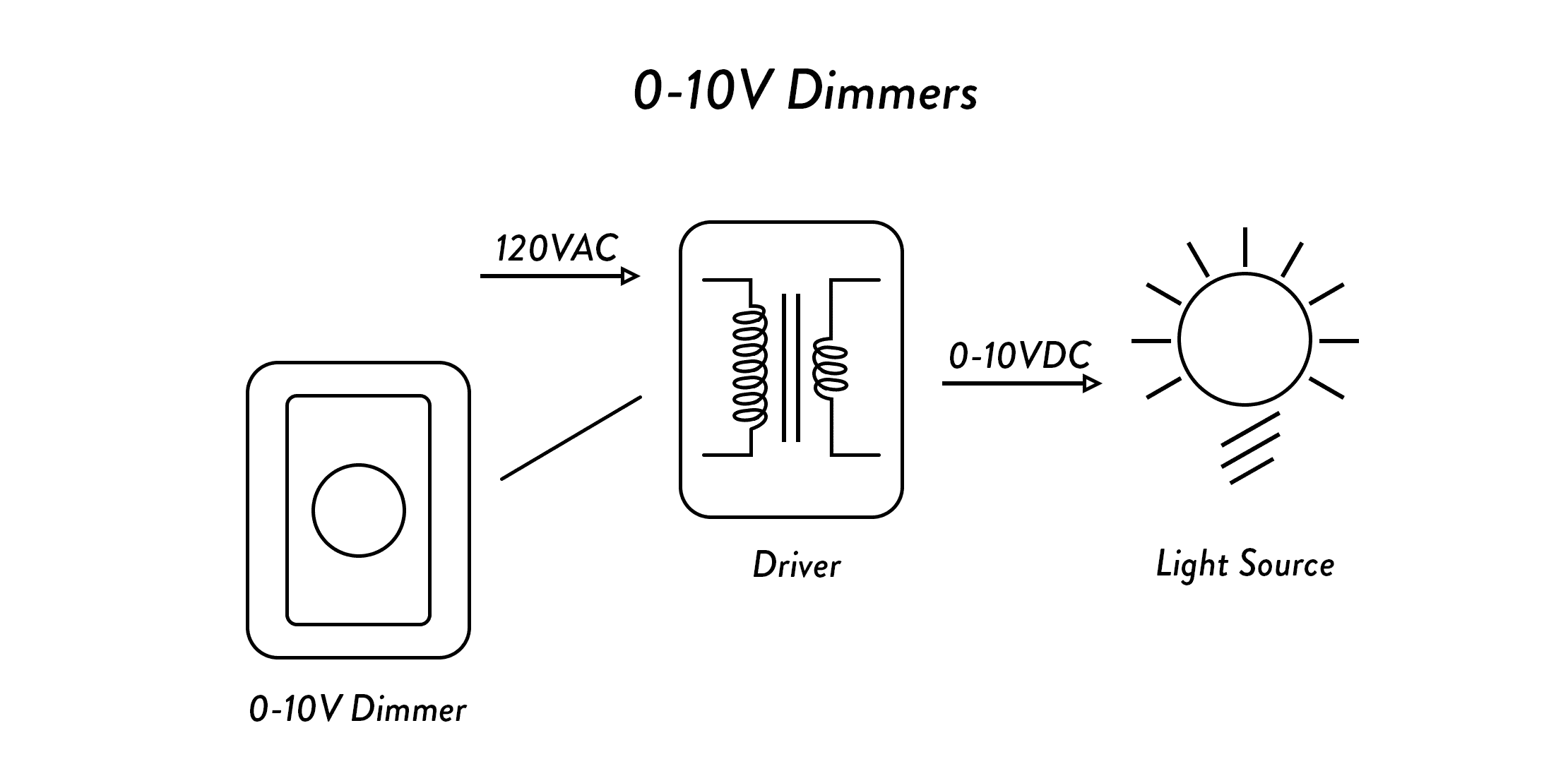
Choosing the Right Dimmer: Ensuring Functionality and Safety
Selecting the right dimmer switch involves understanding the basics of dimming and the nuances of different voltage ranges to ensure overall dimmer-bulb compatibility. Mismatches between a dimmer and a bulb can lead to performance issues such as flickering, limited dimming range, and non-functioning lights. Using a dimmer outside of its voltage range can also shorten the lifespan of bulbs and lead to overheating, which may damage the lighting fixture and pose a fire risk.
To avoid these issues, assess the dimmer’s voltage range, load capacity, and adaptability to your lighting environment. Also, be mindful that not every LED is dimmer-friendly; choosing LED-compatible or universal dimmers is essential for optimal performance and safety. When in doubt, consult with a professional electrician or refer to the manufacturer’s technical specifications to ensure you are making informed decisions about your lighting needs.
If you have any questions on this or other lighting topics, don’t hesitate to reach out!


